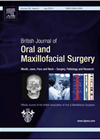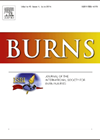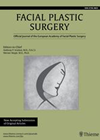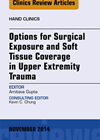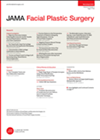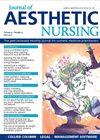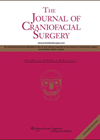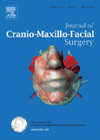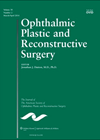
Journal Reviews archive for 2015
Righting the paralysed lip
Many surgical procedures that otolaryngologists perform put the facial nerve at risk of injury, a complication that the surgeon and patient fear alike. Unfortunately, injuries to the nerve can and do happen despite adequate precautions, and facial paralysis may be...
Smartphone applications in burns
The aim of this study was to review apps applicable in the treatment of burns on Google’s Android and Apple’s iOS smartphones, looking at costs, developers, content, target groups and available interfaces. A systematic review of the two app stores...
The initial management of nasal trauma
Nasal trauma and fractures are some of the most prevalent clinical problems in a facial surgery practice. Fractures of the nose are the most common facial fractures and reported to be the third most common fracture of the human skeleton....
Management of post traumatic pseudo-telecanthus
Injuries to the nasal and peri-nasal region are common. Indeed the nasal bones are reported to be the most commonly fractured facial bone. While nasal trauma and deformity are commonly recognised and treated, injuries to adjacent structures are easily missed...
Exposure of the forearm and distal radius
Klausmeyer and Mudgal are a plastic surgeon from Colorado and an orthopaedic surgeon from Boston, respectively, who both specialise in hand surgery. In this article the authors describe the approaches to the forearm and distal radius. They commenced with a...
Exposures of the wrist and distal radioulnar joint
The article Exposures of the Wrist and Distal Radioulnar Joint presents its anatomical material in a logical manner, with headings and sub-headings clearly delineating the subject matter. The ‘Pitfalls’ and ‘Pearls’ sections adequately summarise the material covered, in a format...
Facial asymmetry in patients with deviated noses
Rhinoplasty of a deviated nose is known to be a challenge of its own kind, especially when patients presenting with a deviated nose are unaware of their underlying facial asymmetry. Patients with a successfully straightened nose, continue to perceive their...
Controlled trauma technique when injecting HA dermal fillers
The author presents an interesting discussion regarding the potential for enhanced neocollagenesis through a patented ArqueDerma® dermal filler technique. A thorough overview is conveyed of the dermal collagen matrix, including the characteristics of type I and type III collagen. The...
Guidelines for the management of craniosynostosis
A Dutch national working group developed this guideline with representatives from the societies representing 11 different specialties and the Dutch national patients’ society. Medical, social and psychological aspects of care for both syndromic and non-syndromic craniosynostosis are included, for both...
An overview of microsurgical reconstruction of the head and neck worldwide
Microsurgical reconstruction is an integral part of the treatment following ablation for malignancy or trauma. Currently there are no clear treatment guidelines following tumour resection. This was recognised a few years ago and in 2008 various collaborative groups were founded...
Facial reconstruction with polyethylene implants
Planning reconstructive surgery for complex craniofacial defects challenges even the most experienced of surgeons. In most cases surgery is undertaken to improve anatomical functioning. However, the anatomical structure of these regions is also critical to facial aesthetics and patient satisfaction...
Prostaglandin-associated periorbitopathy
This is a masked study of 33 patients who had been taking a prostaglandin analogue in one eye only for at least a year, to look for signs of prostaglandin-associated periorbitopathy (PAP). The investigators devised a new grading system to...

